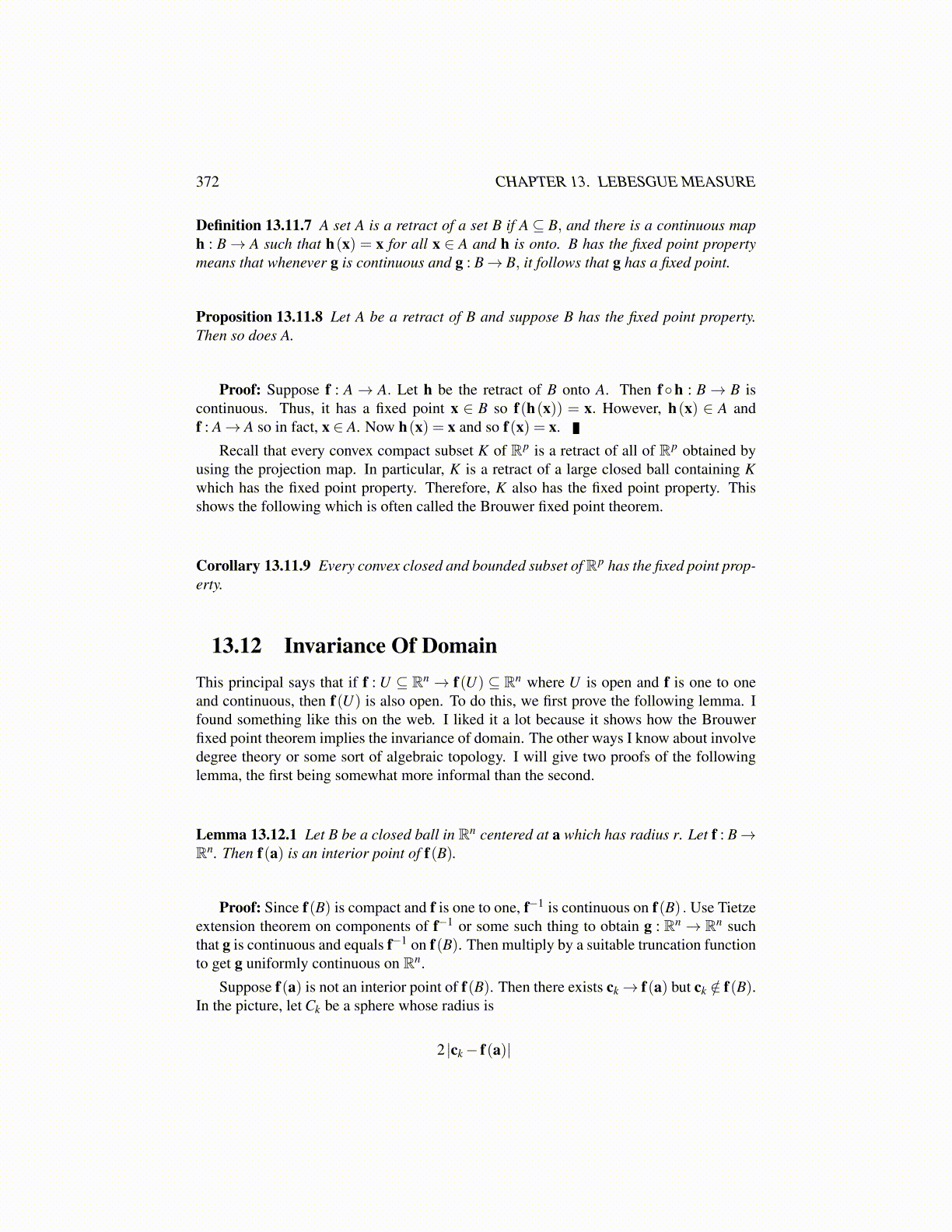
372 CHAPTER 13. LEBESGUE MEASURE
Definition 13.11.7 A set A is a retract of a set B if A ⊆ B, and there is a continuous maph : B→ A such that h(x) = x for all x ∈ A and h is onto. B has the fixed point propertymeans that whenever g is continuous and g : B→ B, it follows that g has a fixed point.
Proposition 13.11.8 Let A be a retract of B and suppose B has the fixed point property.Then so does A.
Proof: Suppose f : A→ A. Let h be the retract of B onto A. Then f◦h : B→ B iscontinuous. Thus, it has a fixed point x ∈ B so f(h(x)) = x. However, h(x) ∈ A andf : A→ A so in fact, x ∈ A. Now h(x) = x and so f(x) = x.
Recall that every convex compact subset K of Rp is a retract of all of Rp obtained byusing the projection map. In particular, K is a retract of a large closed ball containing Kwhich has the fixed point property. Therefore, K also has the fixed point property. Thisshows the following which is often called the Brouwer fixed point theorem.
Corollary 13.11.9 Every convex closed and bounded subset ofRp has the fixed point prop-erty.
13.12 Invariance Of DomainThis principal says that if f : U ⊆ Rn → f(U) ⊆ Rn where U is open and f is one to oneand continuous, then f(U) is also open. To do this, we first prove the following lemma. Ifound something like this on the web. I liked it a lot because it shows how the Brouwerfixed point theorem implies the invariance of domain. The other ways I know about involvedegree theory or some sort of algebraic topology. I will give two proofs of the followinglemma, the first being somewhat more informal than the second.
Lemma 13.12.1 Let B be a closed ball in Rn centered at a which has radius r. Let f : B→Rn. Then f(a) is an interior point of f(B).
Proof: Since f(B) is compact and f is one to one, f−1 is continuous on f(B) . Use Tietzeextension theorem on components of f−1 or some such thing to obtain g : Rn → Rn suchthat g is continuous and equals f−1 on f(B). Then multiply by a suitable truncation functionto get g uniformly continuous on Rn.
Suppose f(a) is not an interior point of f(B). Then there exists ck→ f(a) but ck /∈ f(B).In the picture, let Ck be a sphere whose radius is
2 |ck− f(a)|